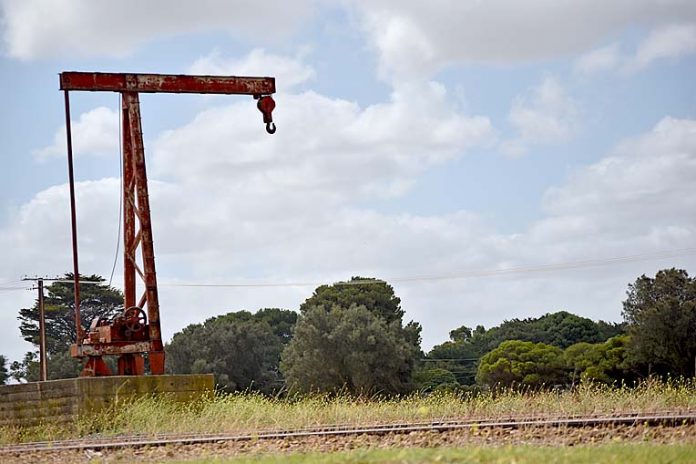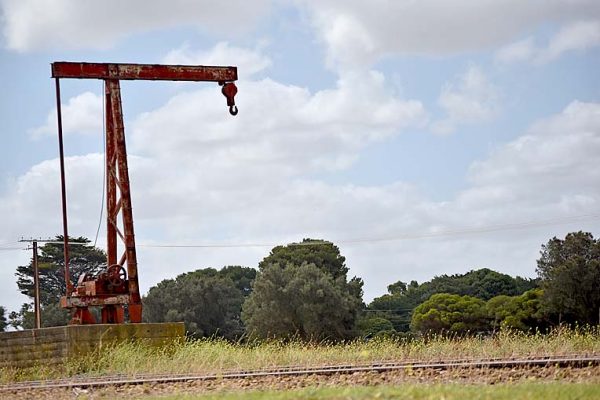

THE long-closed rail link between Millicent and Mount Gambier has been excluded from a new study of the region’s transport needs.
A 50km rail line has linked the two centres for almost 140 years but no freight has been carried on the isolated broad-gauge line for almost three decades.
The first stage of the Regional Development Australia Limestone Coast (RDALC) strategic transport infrastructure study recently got under way.
Focusing on the region’s road freight network and reinvigoration of the two other rail corridors, the study will outline where investment in the transport network can unlock productivity gains through efficiencies and what role rail might play in this.
The project will map the supply chains and estimate road and rail transport costs for the local commodities such as timber, wood chips, dairy products, livestock and crops.
Delivered by the CSIRO, it will assess whether reinstating the rail lines from Mount Gambier to Heywood and Mount Gambier to Wolseley will reduce freight costs and save wear on local roads.
RDALC chairman Peter Gandolfi said data gathered from the study would provide an analysis of total and per tonne transport cost (and potential savings) by commodity and mode of transport, including rail.
“It will also highlight what is known as ‘pinch points’ which are areas where roads or bridges could benefit from an upgrade to allow for more efficient transport options on particular routes,” Mr Gandolfi said.
“This information will then guide decision makers and funding bodies to address critical areas that need upgrades.
“The study will investigate the benefits to the entire region of the Limestone Coast if rail was reinstated from Mount Gambier to Heywood and/or to Wolseley – both connecting to the national rail network.
” It is also based on the high volume of heavy vehicles currently using the road network in these directions and would be strongest case for government investment in rail.
“The study will also determine the benefit of investment in the road network across the entire region including Millicent.”
The study has also been welcomed by RDALC investment attraction and infrastructure manager Dr Elizabeth Perkins.
“With local agricultural products travelling vast distances from farmgate to end market, we are talking about real savings for local producers if we reduce the percent of farm gate value taken up by transport costs,” Dr Perkins said.
“The data gained from this study will provide huge benefits to local producers, local, state and federal government.
“It will also identify prospects in our economy where new markets can be developed based on increased transport efficiencies.
In coming months RDALC and CSIRO researchers will work with stakeholders to gather data on the freight and transport task which will be feed into the model.
The study will take around six months to complete.
The Kimberly-Clark Australia Millicent Mill used rail for various requirements for the first 35 years of its existence.
Mill manager Scott Whicker said an intermodal service for materials that need to be travelled long distances could be beneficial.
He said it would have to be cost competitive compared to road transport.
Meanwhile, rail issues are on the agenda at this afternoon’s monthly meeting in Millicent of Wattle Range Council.
In a statement published in the meeting agenda, council chief executive Ben Gower indicated the local government body had no formal position on the re-opening of the broad-gauge rail line from Wolseley to Mount Gambier.
His statement follows a question-on-notice on the subject from Riddoch Ward councillor Rick Paltridge.
“I ask this question because numerous industry advocates and state political representatives have been quite vocal in recent months,” Cr Paltridge said.
“All are interested in exploring the potential of any freight benefits to the region.
“With approximately 52km of rail track from Wolseley to Mount Gambier bisecting the Wattle Range Council it is important to understand council’s stance.”
In reply, Mr Gower wrote “council has no formal position regarding this matter other than we are supportive of the Limestone Coast Local Government Association’s Regional Growth Strategy and the RSALC Infrastructure Audit which have identified a range of key transport initiatives.”





